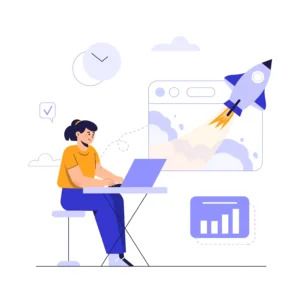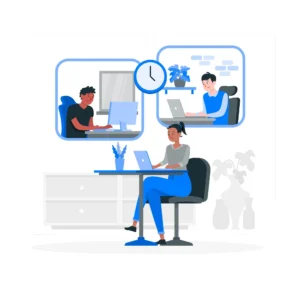How to Understand the Sales Data of Your Fashion Retail Store?
The founder of business management Peter Drucker once said, “if you can measure it, you can improve it.” However, it is not that easy to always know what to measure and how to measure it. In today’s fast-paced world where customers demand personalized services, you must know how to use the given data. To manage customer data, apparel retailers must use an automated and advanced CRM such as LS Retail Apparel ERP Software. The software combines ERP and CRM on the same platform, bridging the gap between accurate data and the operation on time. Data is important for any industry, and in a fast-paced industry like apparel itself, it is gold. Those who know how to manage their sales using data usually can get the most out of their resources. Because of this, our team of researchers has found the top 4 ways to hack the metrics of sales and inventory in your retail store. Sell-through Rates For fashion stores, this may be the most significant key performance indicator (KPI). It provides information on your current position and how much stock you have sold since the season’s start. It not only helps you estimate your selling price, but it also enables you to calculate your return on investment (ROI). One of your largest investments will always be stocks. Make sure you have just the right amount of inventory to take you through each season without having to sell any more items at a loss and eroding your profit margin. You can see how much stock is being sold at any time with the right system. To make sure you are selling enough at the proper moment, you may even track the sell-through rate for certain items. An Apparel ERP System can help you in the process. If you compare this metric’s value to an anticipated sell-through rate, it will become much more potent. You can create sales goals by calculating the projected sell-through rate using previous data from comparable items or item groups. If sales are faster or slower than expected, knowing the difference between actual and planned sales lets you adjust early in the season to avoid overstocking empty shelves. With the right Apparel ERP Software, you can get accurate calculations. Product Life Cycle Curve Retailers only have a little window of time to sell their inventory because fashion is one of the fastest-paced industries. Most of the clothing typically follows a four-stage lifespan, or selling process, which includes introduction, growth, maturity, and decline. Certain items have longer life cycles than others, and some sell better at certain times of the year. Knowing how many units of each product you want to sell and when you want to see most sales is crucial. For instance, the lifecycle of swimwear is quite distinct and typically predictable. Sales often begin the summer season slowly, grow quickly to a peak, and then decline as the cooler months approach, when most customers are looking for discounts and promotions. By the middle of the season, most of the stock in this situation should have gone. If not, there will be a lot of items for you to mark down. You require complete visibility of your stock and sell-through rates to maximize the potential of each product line. Armed with this knowledge, you can make the required decisions to boost sales at the appropriate times and, if necessary, order more inventory to ensure supply. Through online advertising and newsletters, for instance, you can urge customers to buy during the early and mature stages of a product’s lifecycle. If the product isn’t selling as well as you had hoped, you can also start doing flash deals. Additionally, you can decide to lower the price to get rid of any leftover stock when sales start to slow down. Stock Availability and Size Fragmentation with Apparel ERP Software Nothing is more upsetting for a customer than to arrive at your store and discover that the item of clothes they desired is no longer available in their size. However, there is a way you can avoid this. If you can locate the item they are looking for at another store or your warehouse and ship it to them, they will be a very satisfied customer. Retailers today must monitor product availability not only in their physical stores but also online. You’ll stock every size at the start of the season, including S, M, L, and XL, in proportion to your target market and existing clientele. However, your size distribution will become more uneven as the season goes on. To avoid this, some shops decide to discontinue whole product lines and send unsold inventory to other stores to replenish lines. Regardless of how you choose to approach the problem, you need Apparel ERP Software that can clearly show geographical discrepancies, signal dispersed sales distribution, and provide you complete stock visibility so you can shift things to where they will sell the most. Showrooming and Store Capacity Are you utilizing your storage space to its fullest potential? How are you setting up your inventory on the shop floor? Nowadays, most fashion retailers organize their stores into sections according to brands or product categories, determine each section’s capacity, load it with merchandise, and then assess the performance of their store based on in-store transactions and sales data. The expansion of showrooming: the practice of looking at items in showrooms before making an online purchase, is turning this measure on its head even if it is still vital and still applicable today. More customers are entering businesses to touch and try things, rather than immediately making a purchase. Although it still has a beneficial impact on overall sales, your store is still valuable. However, are you successfully tracking this? You can now compare foot traffic to conversion rates and cross-reference them with e-commerce orders made over the same period thanks to new capabilities. Additionally, you may track who purchases by sending information to customers via email while they are in-store using Apparel ERP
How to Understand the Sales Data of Your Fashion Retail Store? Read More »






